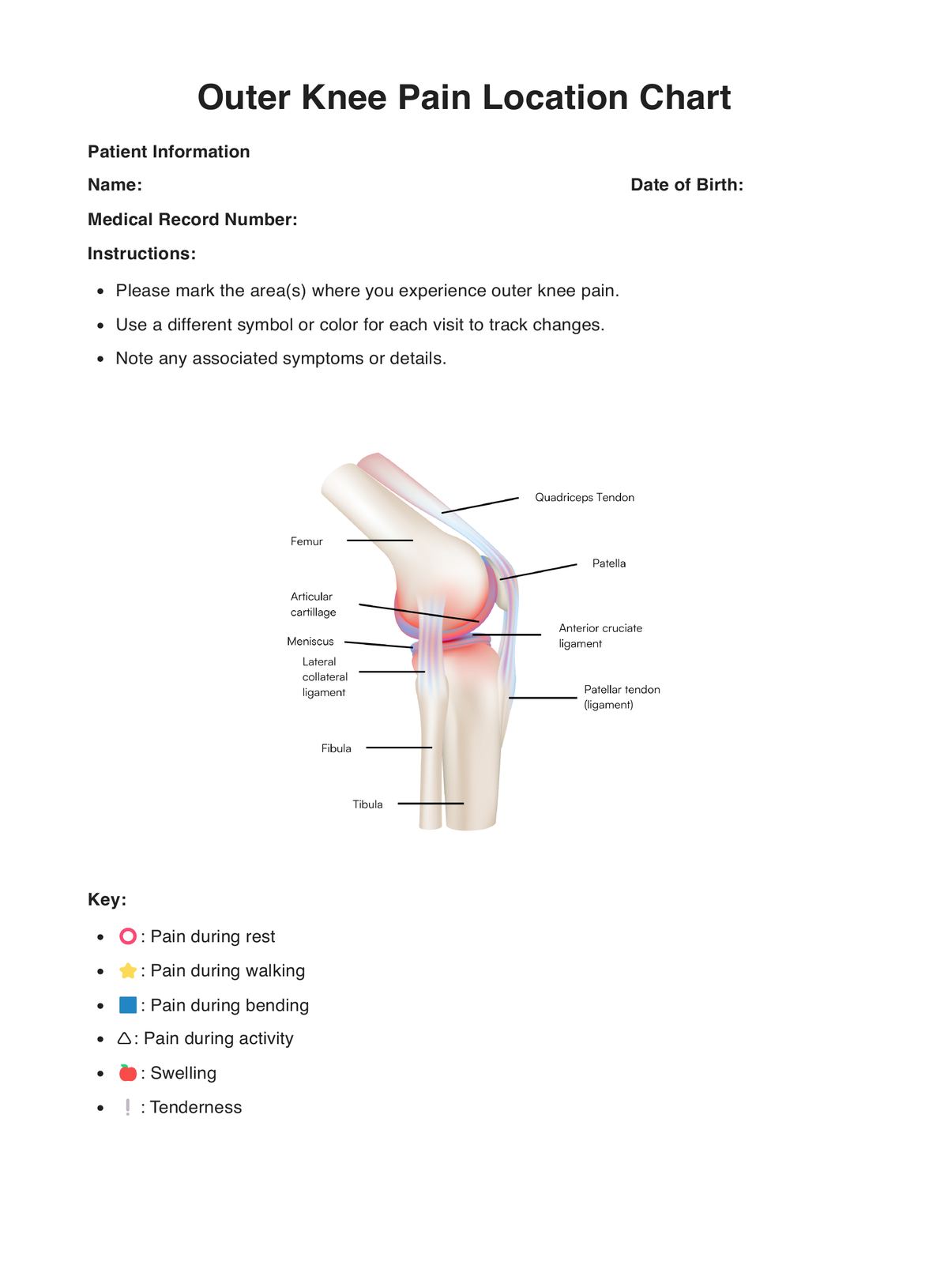Outer Knee Pain Location Charts are typically used by healthcare professionals, including orthopedic specialists, physical therapists, primary care physicians, and patients experiencing knee pain.

Outer Knee Pain Location Charts
Pinpoint outer knee pain accurately with our Outer Knee Pain Location Chart—a valuable tool for diagnosis and treatment.
Use Template
Outer Knee Pain Location Charts Template
Commonly asked questions
These charts are used when diagnosing knee pain, creating treatment plans, monitoring progress, conducting research, and educating patients about the location of their knee pain.
The chart helps individuals by enabling accurate communication of their knee pain to healthcare providers, leading to more precise diagnoses, personalized treatment plans, and improved overall management of knee-related issues.
EHR and practice management software
Get started for free
*No credit card required
Free
$0/usd
Unlimited clients
Telehealth
1GB of storage
Client portal text
Automated billing and online payments











